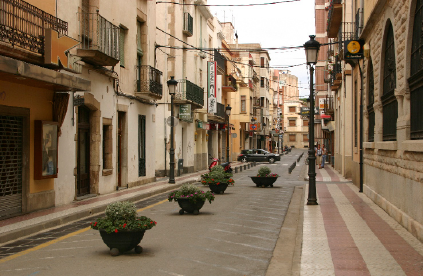Recipe 5.9. Day into night
Nighttime shots with a camera can be difficult at the best of times. With such low light levels, long exposures are needed, and it can be a pretty hit and miss affair to gauge such exposures.
Using a straightforward daytime shot, it's possible in Photoshop to simulate an after dark image, complete with atmospheric street lighting. Here we'll begin by using the ubiquitous Lighting filter as a Smart Filter to set the scene, adding soft radiating light beams and subtle glows with Gradients. Because it's applied as a Smart Filter, you can always adjust the lighting again later in the project. It's vitally important to remember that when it comes to artificial light sources, as we have here, the actual color of each light can vary to an enormous extent. By carefully controlling the hue and intensity of the added lights a wonderful degree of realism can be achieved.
So, fire up Photoshop and let dusk descend!

1 Open the original daytime image and duplicate the Background Layer (Ctrl-J), renaming it Night Layer. To set the scene, go to Image > Adjustments > Hue/Saturation. In the Hue/Sat dialog, check the Colorize box and also ensure Preview is checked so that you can see the changes. Now, move the Hue slider to 232, and the Saturation to 42. Darken the whole image by setting the Lightness to −90.
2 Now we'll introduce another color to liven things up a ...
Get Photoshop CS3 Photo Effects Cookbook now with the O’Reilly learning platform.
O’Reilly members experience books, live events, courses curated by job role, and more from O’Reilly and nearly 200 top publishers.

